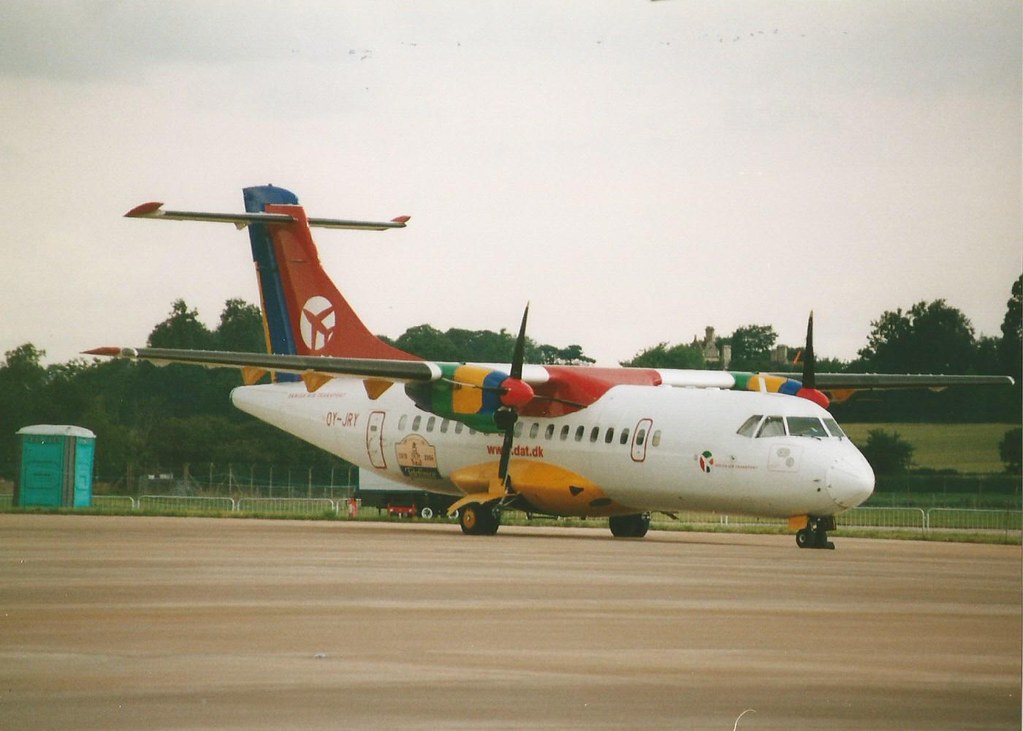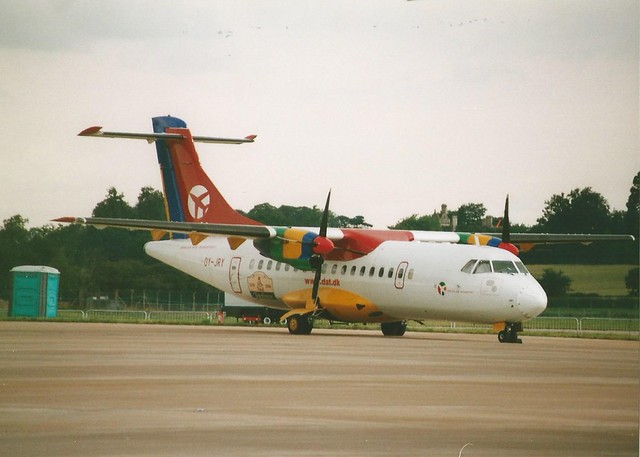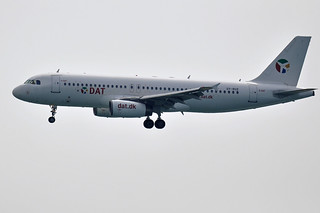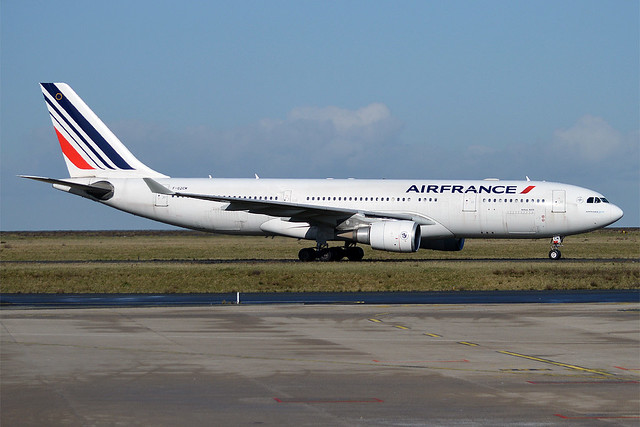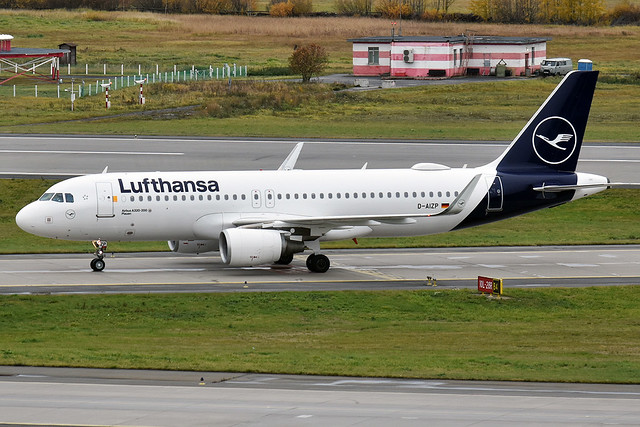DAT AT42 at Bergen on Nov 9th 2007, rotated for takeoff without pilot input and approached stall
Last Update: January 24, 2013 / 16:35:32 GMT/Zulu time
Incident Facts
Date of incident
Nov 9, 2007
Classification
Report
Airline
DAT Danish Air Transport
Flight number
DX-56
Departure
Bergen, Norway
Destination
Floro, Norway
Aircraft Registration
OY-JRY
Aircraft Type
ATR ATR-42
ICAO Type Designator
AT42
The crew initiated a return to Bergen, however abandoned the return when the aircraft entered clouds. The climb stabilized and the controls became easier to move. The crew decided to continue the flight to Floro without the use of the autopilot and landed safely in Floro.
Norway's Statens havarikommisjon (AIBN) released their final report into the serious incident without a formal conclusion, however, commented:
The Accident Investigation Board believes there was a real risk of a stall before the crew eventually regained control of the elevator function following take-off from Flesland. The fact that the aircraft's stall warning system (stick shaker and cricket sound) engaged, indicates that OY-JRY was close to stalling.
Taking into account the major problems with controlling the nose position of the aircraft, the Accident Investigation Board considers it uncertain whether the crew or the aircraft's automatic stall protection system (stick pusher) could have prevented a stall from occurring if the aircraft nose had risen further. It is also uncertain whether it would have been possible to recover in time if a stall had occurred at such a low altitude.
The AIBN has considered if other factors such as aft centre of gravity position, wrong trim setting or frozen (stuck) elevators could have caused this incident. Based on the available information, all these scenarios seem less probable than the ice contaminated horizontal stabilizer hypothesis.
The Accident Investigation Board has noted that de-icing of the stabiliser, and especially the rear sections in the transition between stabiliser and elevator, was given special attention in the tail surface de-icing procedure for ATR 42/72. This is to prevent the elevator from freezing, as has happened several times with this, and aircraft types of similar design. The procedure also explicitly states that the upper surface of the tail must be de-iced, but the AIBN still questions whether the special focus on clearance between the elevator and stabiliser on ATR, and other aircraft types with a similar tail design, may have caused the de-icing personnel to not be sufficiently attentive to the importance of also keeping the upper surface of the stabiliser and elevator completely free of ice and snow.
The AIBN reported that prior to takeoff the aircraft had been de-iced. Two de-icing vehicles were used to spray 193 liters of hot water to de-ice the aircraft and then spray 69 liters of type 2 anti-ice fluid. 8 minutes after spraying of the anti-ice fluid had started the aircraft began its takeoff roll.
The AIBN reported that the aircraft manufacturer commented anti-ice fluid had been used "too sparingly" on OY-JRY stating: "Taking into account the amount of Type II fluid used for the second step seems to be low. Usually the anti-icing fluid is applied through a uniform layer of at least 2mm thick that would correspond to roughly 120 liters of type II fluid. The amount of type II used for this case seems to be low." The aircraft manufacturer concluded: "The event description fully matches with the behaviour an ATR would have in case of an improper de-icing of the horizontal stabilizer."
Incident Facts
Date of incident
Nov 9, 2007
Classification
Report
Airline
DAT Danish Air Transport
Flight number
DX-56
Departure
Bergen, Norway
Destination
Floro, Norway
Aircraft Registration
OY-JRY
Aircraft Type
ATR ATR-42
ICAO Type Designator
AT42
This article is published under license from Avherald.com. © of text by Avherald.com.
Article source
You can read 2 more free articles without a subscription.
Subscribe now and continue reading without any limits!
Read unlimited articles and receive our daily update briefing. Gain better insights into what is happening in commercial aviation safety.
Send tip
Support AeroInside by sending a small tip amount.
Related articles
DAT AT42 at Saarbruecken on Nov 19th 2023, rejected takeoff
A DAT Danish Air Transport Avions de Transport Regional ATR-42-300, registration OY-JRY performing flight DX-125 from Saarbruecken to Berlin…
DAT AT42 at Karup on Nov 16th 2021, smell of smoke in cockpit
A DAT Danish Air Transport Avions de Transport Regional ATR-42-300, registration OY-JRY performing flight DX-83 from Karup to Copenhagen (Denmark)…
DAT A320 near Rimini on May 7th 2023, engine failure
A DAT Danish Air Transport Airbus A320-200 on behalf of Air Malta, registration OY-RUZ performing flight KM-376 from Malta (Malta) to Berlin…
DAT A320 near Budapest on Aug 10th 2021, engine shut down in flight
A DAT Danish Air Transport Airbus A320-200 on behalf of Wizzair, registration OY-RUZ performing flight W6-6611 from Tirana (Albania) to Berlin…
DAT AT72 at Copenhagen on Feb 21st 2019, smoke in cockpit
A DAT Danish Air Transport Avions de Transport Regional ATR-72-200, registration OY-RUR performing flight W2-1090 from Copenhagen to Karup (Denmark)…
Newest articles
France A332 near Munich on Jan 4th 2026, toxic fumes on board
An Air France Airbus A330-200, registration F-GZCM performing flight AF-565 from Beirut (Lebanon) to Paris Charles de Gaulle (France), was enroute at…
Lufthansa A320 at Cluj on Jan 4th 2026, bird strike
A Lufthansa Airbus A320-200, registration D-AIZP performing flight LH-1668 from Munich (Germany) to Cluj (Romania), was on final approach to Cluj's…
Subscribe today
Are you researching aviation incidents? Get access to AeroInside Insights, unlimited read access and receive the daily newsletter.
Pick your plan and subscribePartner

ELITE Simulation Solutions is a leading global provider of Flight Simulation Training Devices, IFR training software as well as flight controls and related services. Find out more.
SafetyScan Pro provides streamlined access to thousands of aviation accident reports. Tailored for your safety management efforts. Book your demo today
AeroInside Blog
Popular aircraft
Airbus A320Boeing 737-800
Boeing 737-800 MAX
Popular airlines
American AirlinesUnited
Delta
Air Canada
Lufthansa
British Airways
